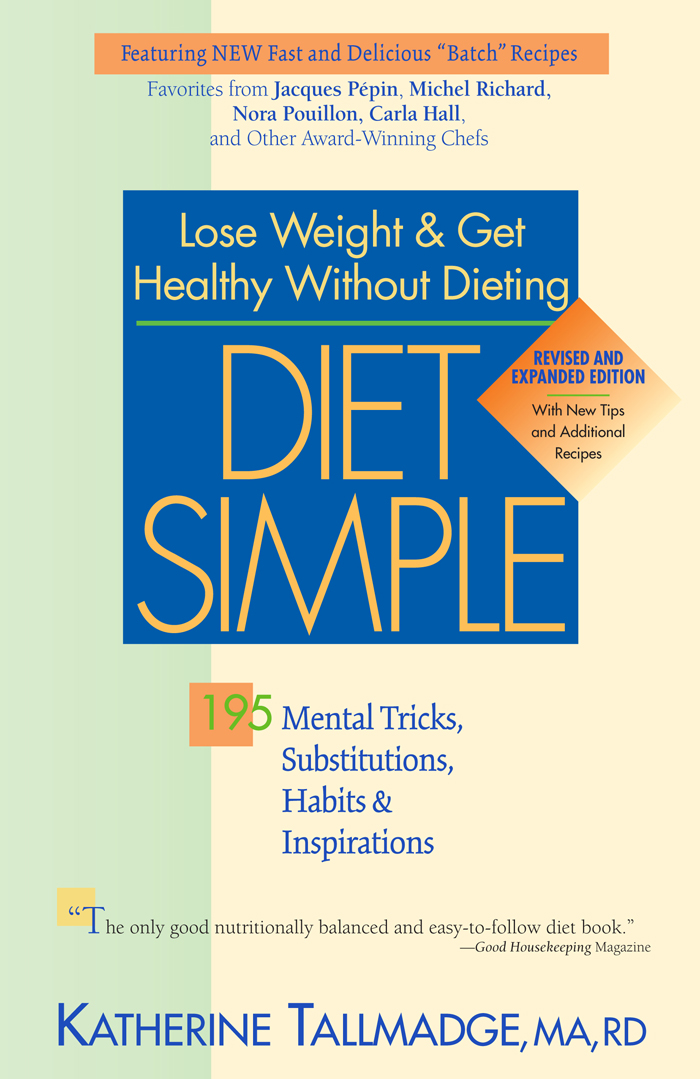Tired of Blizzard Bloat? Reversing Winter Weight Gain (Op-Ed)


Katherine Tallmadge, M.A., R.D., is a registered dietitian, noted motivational and wellness speaker, author of "Diet Simple: 195 Mental Tricks, Substitutions, Habits & Inspirations"(LifeLine Press, 2011) and a frequent national commentator on nutrition topics. This Op-Ed is adapted from a post on her website. Tallmadge contributed this article to Live Science's Expert Voices: Op-Ed & Insights.
Have you noticed your weight creeping up this winter? Are you experiencing more cravings than usual, especially for heartier, more fattening foods? Well, take heart. You're not the only one experiencing "blizzard bloat," the creeping up of body fat that hits a large number of people during the winter months.
In the animal kingdom, fattening up in winter is critical for survival. Animals overeat to store enough excess fat to survive until spring. The human animal has a similar natural instinct, probably leftover from the days when food was scarce in winter and shivering in the cold caused us to burn our fat stores too quickly, leaving us too thin to survive (aaaah, those were the days!). But now, with temperature control, improved agricultural techniques and a cupcake shop on every corner, that leftover but highly frivolous instinct just causes trouble. Because of modern conveniences, we humans fatten up following the old instincts when we no longer need to!
Though these old instincts are plausible as a cause of winter weight gain, there are more complex — and controllable — causes too. The most important probably involve decreases in both sunlight and physical activity. Together, they can contribute to enough of a calorie imbalance to cause weight gain. Here's how.
- Sunlight. Some people are particularly susceptible to light deprivation, caused by the decrease in daylight hours during the winter. This affects the neurochemical serotonin, responsible for your mood and appetite, prompting increased food cravings and weight gain.
- Physical Activity. When it's cold outside, we're less physically active and cut back on subtle calorie-burning activities such as short walks and light outdoor chores. These caloric expenditures may only add up to about 100 calories per day, but this translates into a 3 to 4 pound weight gain (or more) during the winter months.
What can you do to both improve your mood and curb your cravings?
- Increase exposure to sunlight. Bundle up and go outside to reverse the symptoms of light deprivation. You'll feel refreshed and less bored, and your appetite may be more controllable. The amount of needed daylight varies for each individual. In general, the more the better. One hour daily in the morning, ideally at sunrise, is most helpful. If you're not an early bird, several hours on the weekends may help make up for a lack of sun during the week. Some people may benefit from getting daily "light therapy," which would be prescribed by your doctor. Some popular products are from "SunBox."
- Up your activity level, even just a little. During just one exercise bout, your brain releases feel-good chemicals, called endorphins, into your body. These chemicals reduce pain, increase feelings of well-being and elevate your mood. If you're regularly active, these benefits multiply. A brisk, 30-minute walk just three times a week relieves major depression just as effectively as an antidepressant in most adults, according to a study published in the Archives of Internal Medicine. Wear a pedometer to keep track of your activity level and to motivate you to do more (I recommend the latest "Omron" models).
- Increase your intake of a colorful array of fruits and vegetables. These low-cal, but filling, carbohydrates increase serotonin production, helping to regulate mood and appetite. They also help you feel more satisfied with fewer calories, and research shows adding them to a meal could save at least 100 calories (translating to 4 to 5 pounds during the colder months)
And lastly, some diet tips:
- To lower the calories and increase the portion size of a favorite recipe, pump up the volume by adding vegetables as often as you can. This way, you can eat your usual portion for fewer calories.
- Choose fresh fruits over dried fruits or juices. For 100 calories, you could eat 1/4 cup of raisins or two cups of grapes. (You're more likely to fill up on the grapes.)
- Start lunch or dinner with a bowl of broth-based vegetable soup or a big vegetable salad with low-calorie dressing.
- Turn main courses into soups or salads by adding broth or vegetables.
Tallmadge's most recent Op-Ed was "A Chocolate a Day?" and her additional contributions are available on her profile page. This Op-Ed was adapted from "Tired of Blizzard Bloat? Reversing Winter Weight Gain" on Tallmadge's website. Her latest book is "Diet Simple Farm to Table Recipes: 50 New Reasons to Cook In Season." You can follow Tallmadge on Facebook, Twitter @KETallmadge and on YouTube. The views expressed are those of the author and do not necessarily reflect the views of the publisher. This version of the article was originally published on Live Science.
Get the world’s most fascinating discoveries delivered straight to your inbox.





